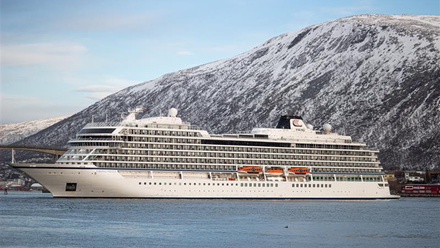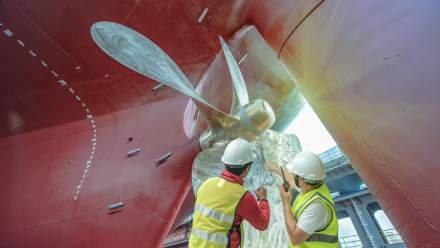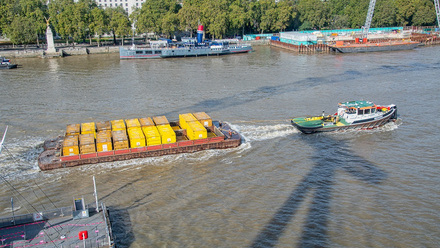SS Andrea Doria: a tragic success story
A look back to July 1956, when a luxury ocean liner collided with passenger ship Stockholm in US waters, but a Titanic-scale disaster was averted. Who was the blame for the incident?
The various accounts of the collision between two passenger ships, SS Andrea Doria (Italian) and Stockholm (Swedish), left several unanswered questions including the handling of ships at high speeds and in close-quarter situations.
The famous accident happened on the night of 26th July 1956 when the two vessels were proceeding in opposite directions on the east/west route between the Nantucket Shoals Lightship and Lightship Ambrose.
SS Andrea Doria, 29,083 GRT, 214m and launched in 1951, was moving west at 21.5 knots in dense fog, while Stockholm, 12,165 GRT, 160m and launched in 1946, was travelling east at 18.5 knots in fairly clear weather bound for Sweden (but would have entered the fog bank at least 10 minutes before the collision).
There were no other ships in the vicinity to complicate the situation as SS Andrea Doria was struck by Stockholm on its starboard side, began to list and sank the next morning. In total, 51 lives were lost, which was remarkable given there were 1,706 passengers and crew on the SS Andrea Doria and half the ship’s lifeboats were unusable post-accident.
A higher death toll was averted in part due to the quick release of SS Andrea Doria’s working starboard lifeboats, plus additional lifeboats from Stockholm and vessels responding to the SOS call.
An inquiry was set up but was terminated when the two sides reached an out of court settlement.
What happened and why
The US Coast Guard’s suggestion at the time was that eastbound ships keep to the south of the route’s centreline and westbound ships stick to the north (this has since become compulsory).
SS Andrea Doria observed this recommendation while Stockholmapparently did not and sailed on the north side of the centreline.
The bridge of SS Andrea Doria was manned by the captain and two officers (plus a lookout and helmsman). Stockholm was manned by only one officer (the third mate) with a lookout and a helmsman.
The first substantive account of the accident was written by journalist Alvin Moscow in 1959 (subsequently turned into a book in 1981), and more recently Samuel Halpern (an American systems engineer) wrote a 47-page paper forensically analysing the accident.
The diagrams in Moscow’s report shows that shortly before the collision, Stockholm interpreted the radar echo of SS Andrea Doria as being fine on its port bow and that a safe port-to-port passing was the appropriate action.
SS Andrea Doria meanwhile made the opposite interpretation that Stockholm was fine on its starboard bow and that a safe starboard-to-starboard passing was the correct action.
Back in 1956, ships’ radars did not indicate the relative direction of motion - to do this it was necessary to use a plotting board over several time intervals.
Halpern’s diagrams and tables show what happened by reference to the course recorders on each vessel. When first appearing on each other’s radar, the ships were about 17nms apart and it was at this time that the seeds of the accident were sown, although the blame game was just beginning.
The interpretation of this author
It is easy to understand why the two shipping lines decided to terminate court proceedings. Continuing would have involved endless legal arguments about the precise interpretation of the rules and exactly what the direction of approach was of each vessel.
Both sides breached the Convention on the International Regulations (COLREGS) later introduced in 1972, although I have seen several comments to the effect that the vessels should have acted under rule 18 (Merchant Shipping Act 1948), namely both turn to starboard. However, rule 18 only applies when ships are in sight of one another, and this accident occurred in foggy conditions.
We are therefore left with how rules 27 and 29 should be interpreted. Rule 29 brings in the role of shipowners, and here it would be relevant to know what instructions the management of both lines gave on the issue of safe navigation and the need to maintain schedules.
Rule 29 also deals with the concept of the ‘ordinary practice of seamen’ (much like common sense). In this regard, the captain of Stockholm’sdisregard of the US Coast Guards traffic separation scheme must be seen as a transgression.
One issue that I felt was missing during studies for deck officer certificates was the handling characteristics of ships at high speeds. Stockholm’s hard turn to starboard order looks like the worst possible option. In the 30 seconds before the collision, Stockholm turned 13 degrees to starboard in response to a hard starboard helm order.
A key question remains: what would have happened if the opposite had been done and Stockholm's port engine put full astern as well? In addition, if the Stockholm master had been on the bridge this action may have been taken 20 seconds earlier (quite a long time in that situation). At least SS Andrea Doria would have been hit further aft and quite likely not have sunk - particularly if Stockholm did not pull away too soon after impact.
Main image: a stamp printed in the Germany shows the Andrea Doria; credit: Shutterstock.
This article represents the thoughts and opinion of the writer, and not those of IMarEST.
There is a recently launched History Society Group on IMarEST Connect for further discussion on this and similar topics. You can also tell us what you think about this article by joining the discussion in the All Member Forum.






